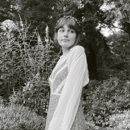Netflix’s hit original TV drama Bridgerton has been the subject of quite a bit of conversation since the release of its season two, gaining even more popularity since the first season. People rave about the romance, the pining and the drama. It’s a period piece performed with enough modern music and scandal to hold the attention of an audience that’s more familiar with Gossip Girl or Sex and the City.
When I started watching Bridgerton‘s second season, I immediately picked up on several things that felt familiar. I realized that so much of the plot was derived from other period piece films or TV shows that I’d watched before, but I wasn’t necessarily mad about that. The clichés and tropes, while familiar and in some ways unoriginal, still worked for me. I didn’t mind that there were more than one scene of the main characters’ hands reaching for each other, though I’d seen that play out famously in movies like Pride and Prejudice and Emma. I didn’t mind that the love triangle between Anthony and the Sharma sisters mirrored that of Alexander Hamilton and Elizabeth and Angelica Schuyler in Hamilton. I only point this out because typically, I would mind. In most cases, I hate when TV shows reuse old plotlines or I see something in a movie that feels stolen from another movie. For some reason, that didn’t seem to apply to Bridgerton.
I think one of the reasons why I didn’t mind seeing so many typical period piece clichés show up in Bridgerton was because period pieces satisfy a part of my brain that longs to see love look more dramatic and less watered down. In a culture full of dating apps and one night stands, I think a lot of us look to period pieces for escapism. The emotional pining is refreshing. Having to watch somebody yearn for a single dance reminds us that romance can be found in small moments. I don’t mind seeing the same trope played out multiple times in a period piece because it indulges my interest in seeing a relationship that is long and drawn out. Nothing happens too quickly, and Bridgerton does a fantastic job of making the audience wait.
In the same way that Bridgerton’s emphasis on emotional pining points to how different romance is in our modern society, it also emphasizes how similar our struggles are in relationships. Even though it’s much easier to go on a casual date with somebody today than it would be in Regency era London, our modern day relationships are still mutually confusing. In a way, it’s comforting to see characters from a completely different time period struggle to be vulnerable and honest about their feelings for each other. With as many differences as there are between the world of Bridgerton and our world today, the show has some unexpectedly relatable moments.
Much like how a good romantic comedy can be broken down into a somewhat predictable formula, some period pieces are just the skeletons of past period pieces broken down and glued back together. I have no complaints about that, though. Some things are meant to be light entertainment and predictable fun, nothing more. Bridgerton checks all of those boxes for me, with the correct balance of plot twists and beloved tropes to count as a perfectly acceptable cliché. It might give a nod to Jane Austen or Emily Brontë here and there, but for me, it works every time.


